 Installation view of RECALL. Image courtesy of Walnut Contemporary
Installation view of RECALL. Image courtesy of Walnut Contemporary
At a time when Canada prepares to welcome 25,000 war-weary Syrian refugees, and as war in all of its manifestations dominates our media landscape, Walnut Contemporary has chosen to face the themes of conflict, displacement, and migration head on. Launched the week of Remembrance Day under the curatorial vision of Director/Curator Raquel Vilhena, RECALL — the gallery’s 2015 group show — explores what it means to remember, what it means to “bring back…into one’s mind, especially so as to recount it to others.” The show is, as this statement implies, a balanced exploration of memory and the visual communication of memory. More specifically, however, as Vilhena discussed in a recent interview, the exhibition “deals with heroes and survivors, displaced persons, refugees, those who are left behind, what is left behind.” In what she describes as “a very emotional show,” RECALL consists of artistic responses — some commissioned, others pre-existing — from a selected group of 25 of the gallery’s permanent and guest artists. It is an ambitious and poignant exhibition — one that not only addresses a difficult subject in an appropriately complex way, but that is also meaningfully site-specific: before it became a gallery, the building was a legion hall, traces of which — including a brass commemorative plaque once on the building’s façade — still remain.
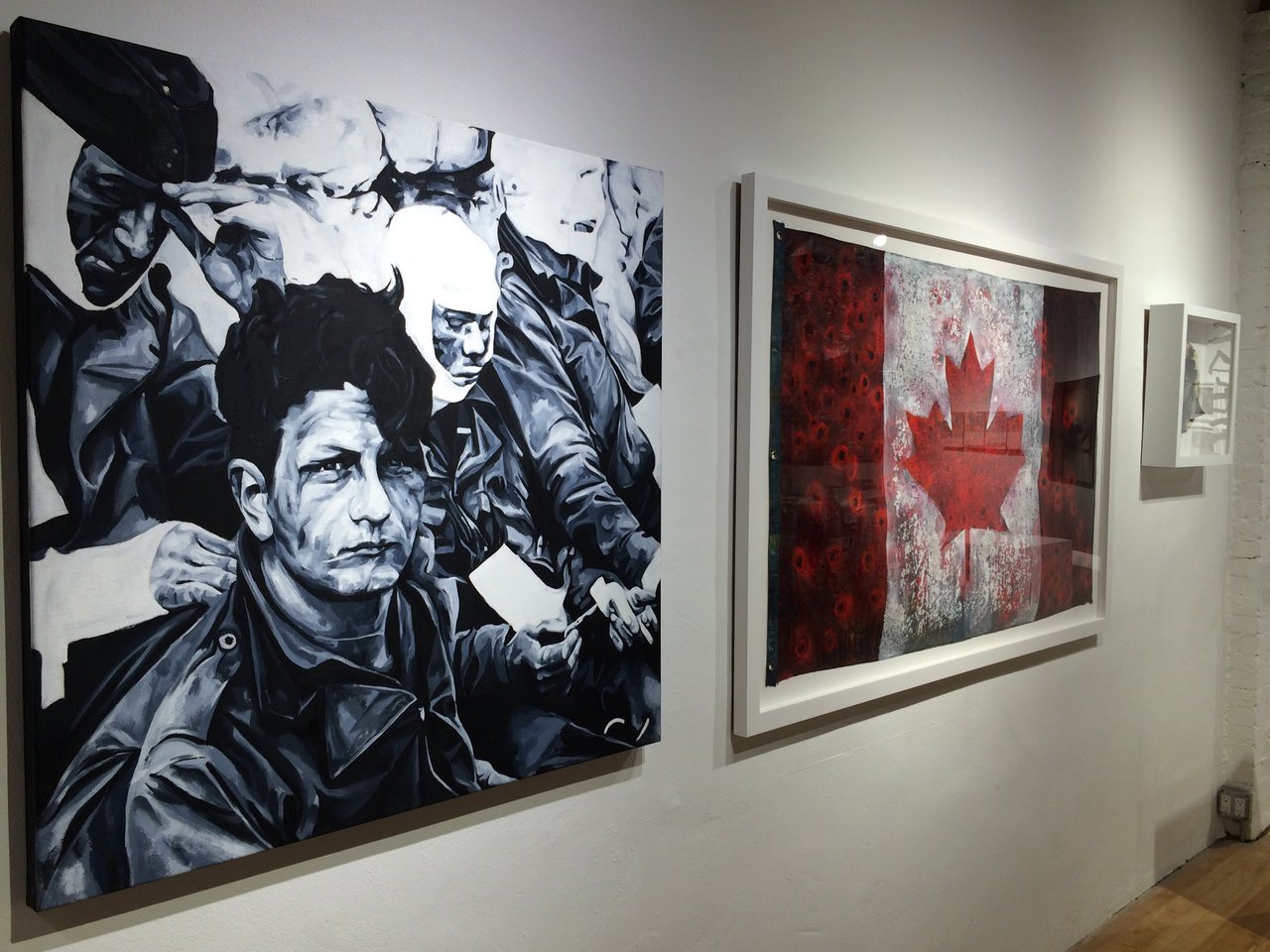 Installation view showing Duarte Vitoria, Heroes, oil on linen, 39.5″ x 39.5″ (left) and Miguel Barros, Flanders Field, acrylic and oil on recycled Canadian flag, 60″ x 35″. Image courtesy of Walnut Contemporary
Installation view showing Duarte Vitoria, Heroes, oil on linen, 39.5″ x 39.5″ (left) and Miguel Barros, Flanders Field, acrylic and oil on recycled Canadian flag, 60″ x 35″. Image courtesy of Walnut Contemporary
When gallery owner, Jason Martins, brought this history to Vilhena’s attention, she saw the themes it raised as an appropriate starting point for this year’s group show, particularly given the current state of affairs in Europe and elsewhere. Taking the legion plaque as a starting point — even mounting it on the exhibition’s title wall — Vilhena cleverly constructed the theme of RECALL as one that not only refers to the memory of the space, but that also unites many of those touched by war — those who remember loved ones fighting or lost, homelands left behind, lives affected by violence. For RECALL, Vilhena set aside her usual curatorial practice in order to accommodate a perhaps overly ambitious number of featured artists as well as emotive subject matter . Drawing inspiration from some European museums, which tend to display a greater number of works in smaller spaces, Vilhena has created a show that finely balances a somber theme with a sparkling variety of textures, colours, and materials. From Ito Laïla François’ Bellmeresque glass and clay sculpture, to Maia’s or Heidi Leverty’s photographs of distant shores, to Manuel d’Olivares’ aluminum crumpled posters, RECALL incorporates an impressive array of artistic forms and media. Painting, sculpture, photography, glasswork, and ceramics sit alongside vitrines of archival artifacts and documents — mementos of some of the artists’ personal family histories. The overall aesthetic is one of compelling heterogeneity.
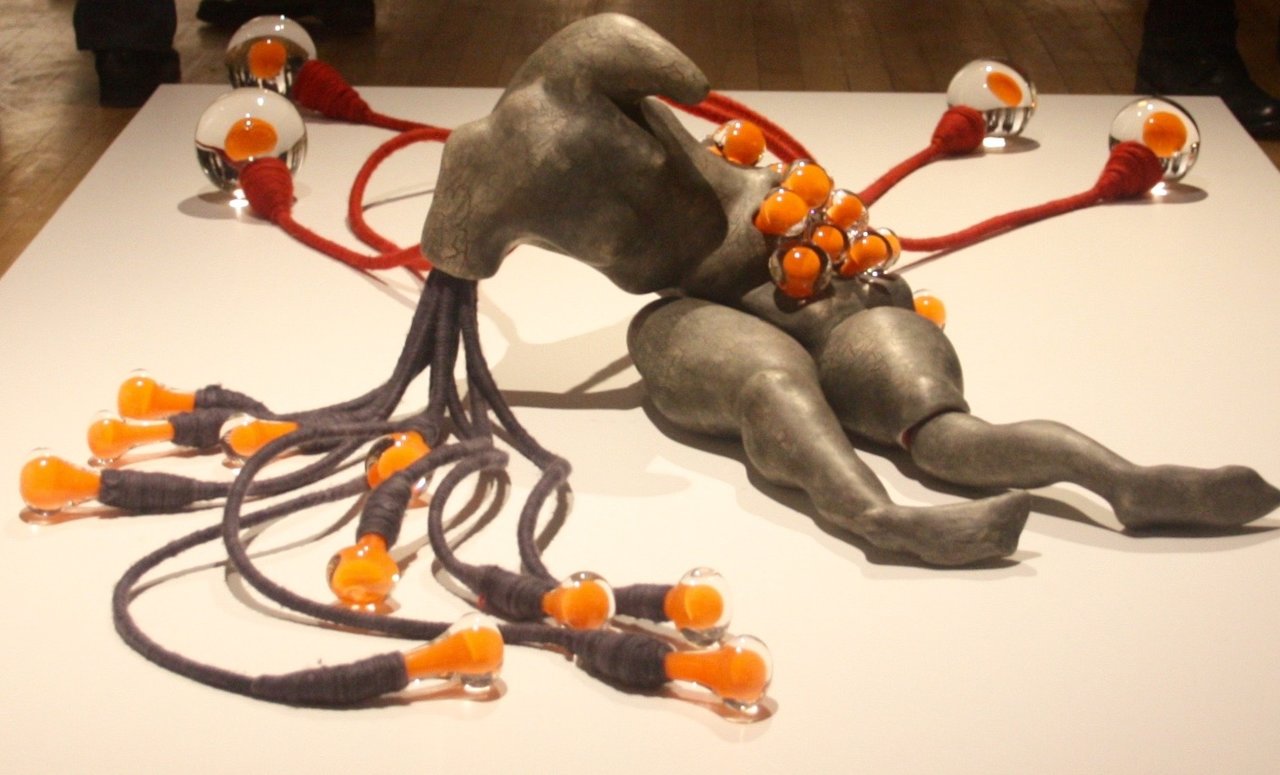 Ito Laïla François, Racines Défoliantes/Defoliant Roots, clay, glass wool and acrylic, 48″ x 72″. Photo: Catherine MacArthur Falls
Ito Laïla François, Racines Défoliantes/Defoliant Roots, clay, glass wool and acrylic, 48″ x 72″. Photo: Catherine MacArthur Falls
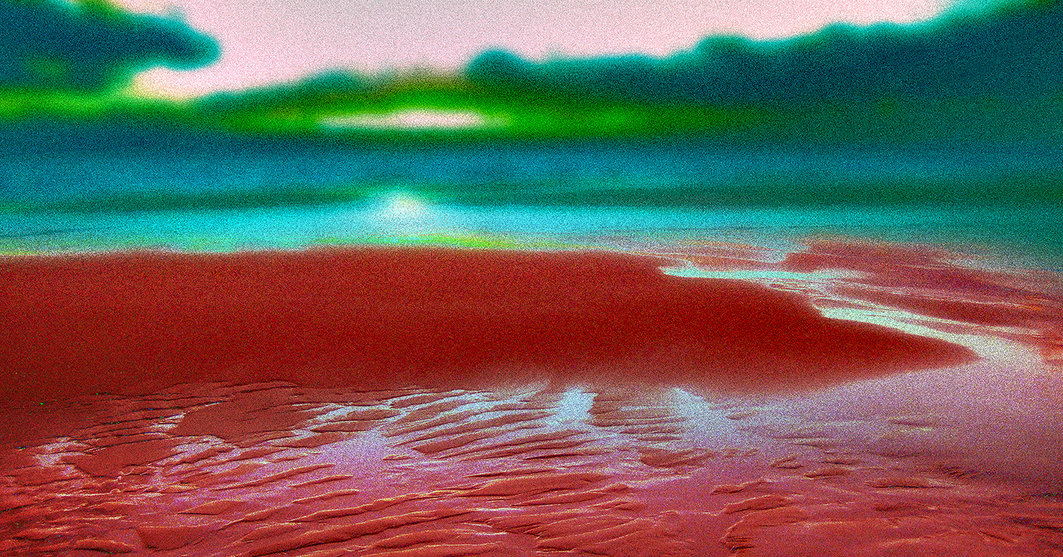 Maia, Juno, pigment on Hahnemuhle William Turner matt fine art paper, 19.6″ x 10″. Image courtesy of Walnut Contemporary
Maia, Juno, pigment on Hahnemuhle William Turner matt fine art paper, 19.6″ x 10″. Image courtesy of Walnut Contemporary
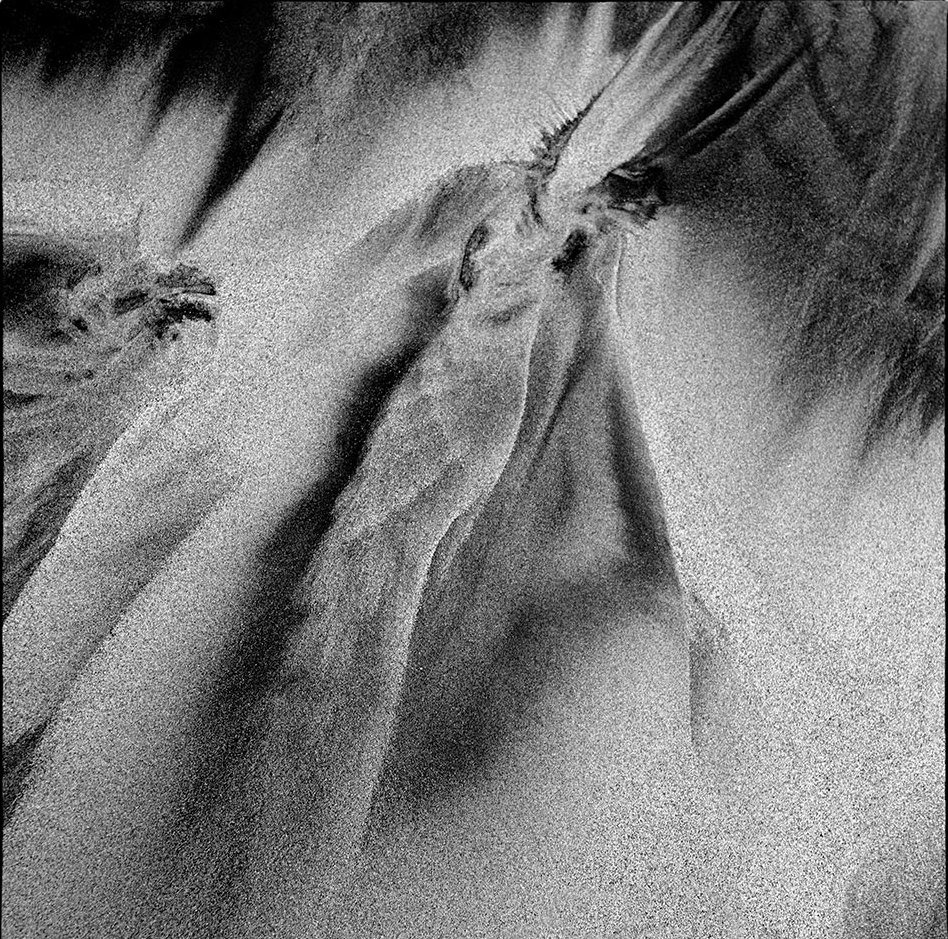 Heidi Leverty, Tales from the Sea (The Ones that Stayed Behind), Tides, pigment on archival paper, 12″ x 12″. Image courtesy of Walnut Contemporary
Heidi Leverty, Tales from the Sea (The Ones that Stayed Behind), Tides, pigment on archival paper, 12″ x 12″. Image courtesy of Walnut Contemporary
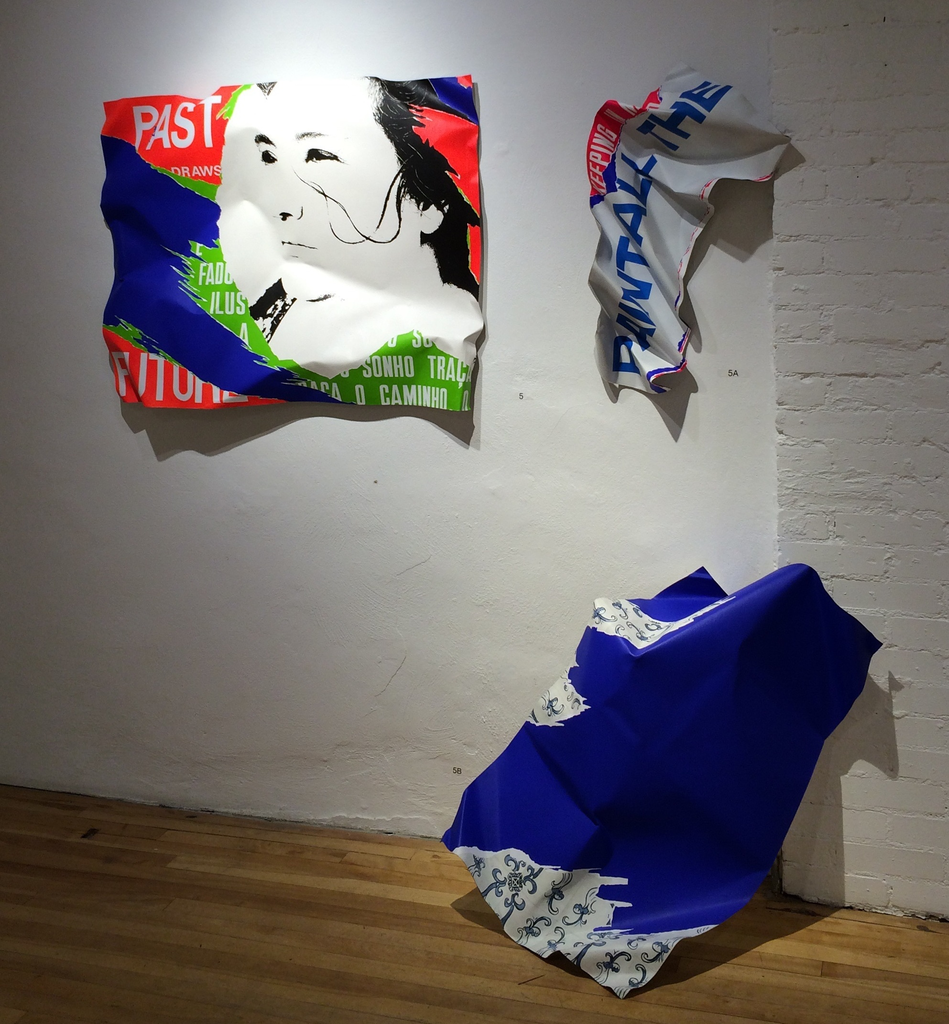 Manuel d’Olivares, Face the Future, acrylic on canvas over aluminum, 23.5″ x 39.5″. Image courtesy of Walnut Contemporary
Manuel d’Olivares, Face the Future, acrylic on canvas over aluminum, 23.5″ x 39.5″. Image courtesy of Walnut Contemporary
Conceptually, the work is also strikingly varied. Responses range from literal and representational to highly abstract. Many of the artists share deeply personal experiences of war, displacement, and commemoration; others approach the topic from the perspective of broad, even universal, forces or emotions. Djuna Day’s abstract wall sculpture, “Everything Seems Alright”, for instance, utilizes interlocking, concentric wood circles to evoke the churning forces — whether political, economic, social, or humanitarian — that mete out the realities of our society. As implied by its title, the work’s serene surface aesthetic belies a sense of suspended dynamic motion. Here, as with power structures, balance is tenuous, always on the verge of spinning apart. At the opposite end of the abstract-representational spectrum, Silvija Saplys’ work in encaustic and photography portrays her family’s experience of war in Lithuania. Incorporating personal photographs and images of the “Hill of Crosses”, Saplys’ images weave a story of both familial and national resilience. Meanwhile, Julia Harris’ hanging sculpture, “Bleached Remains”, falls somewhere between these two poles. In this work, Harris grafts an abstract, minimalist aesthetic onto highly personal subject matter. Consisting of branches recovered from a beaver dam, whitewashed with Portland cement, the pared down sculpture evokes both bleached bones and the wood structures used to reinforce trenches. Yet, it also serves to commemorate her grandfather, Lieut. Leslie Marler, who fought in WWI. A nearby vitrine of archival documents and artifacts collected by members of Harris’ family helps to reinforce this personal connection.
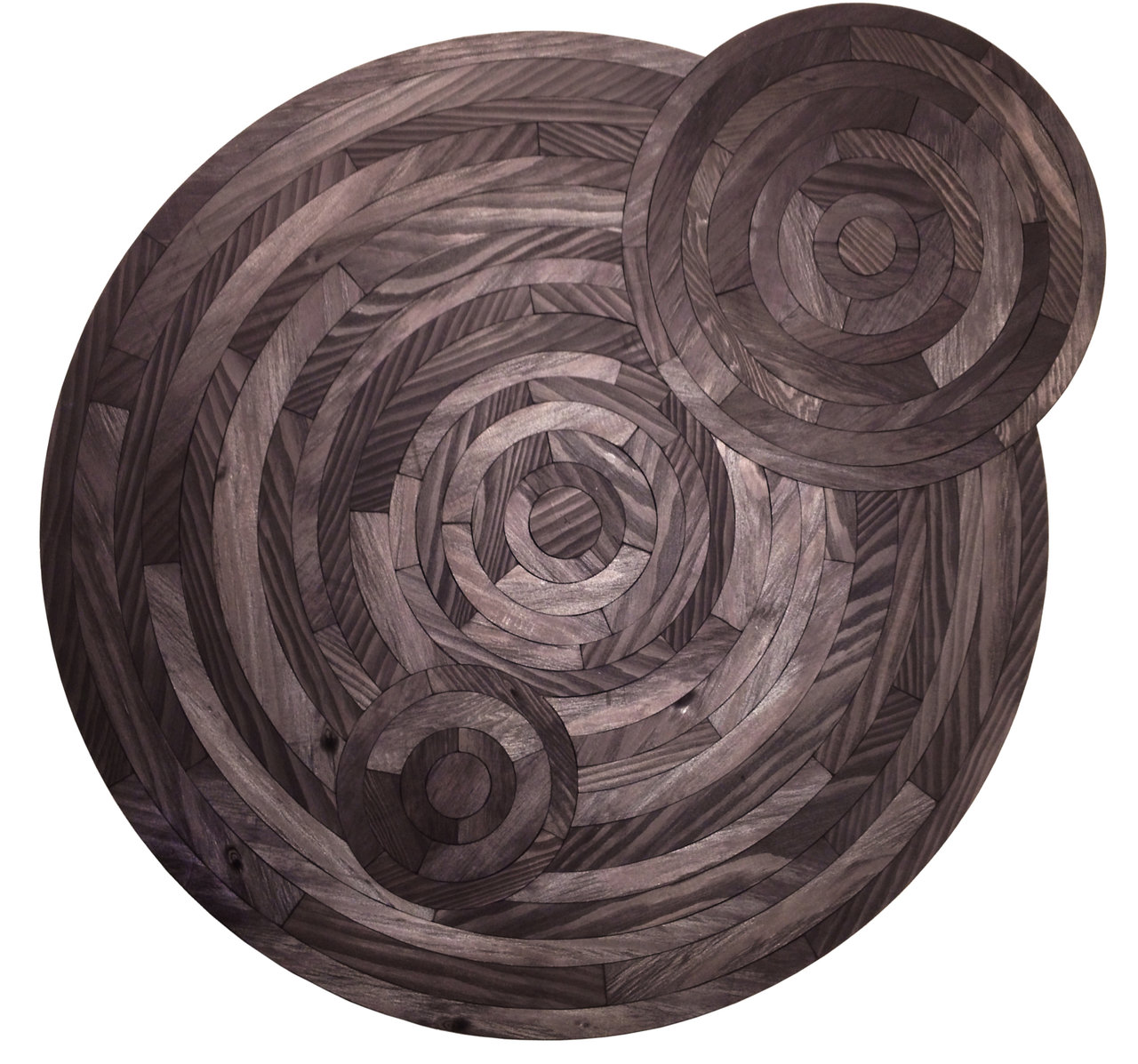 Djuna Day, Everything Seems Alright (Assemblage #8), ebonized wood tiles (fir), 36″ diameter. Image courtesy of Walnut Contemporary
Djuna Day, Everything Seems Alright (Assemblage #8), ebonized wood tiles (fir), 36″ diameter. Image courtesy of Walnut Contemporary
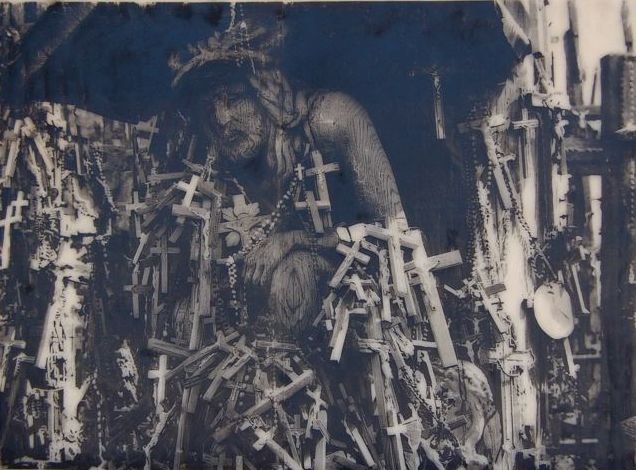 Silvija Saplys, Hill of Crosses, detail. Image courtesy of Walnut Contemporary
Silvija Saplys, Hill of Crosses, detail. Image courtesy of Walnut Contemporary
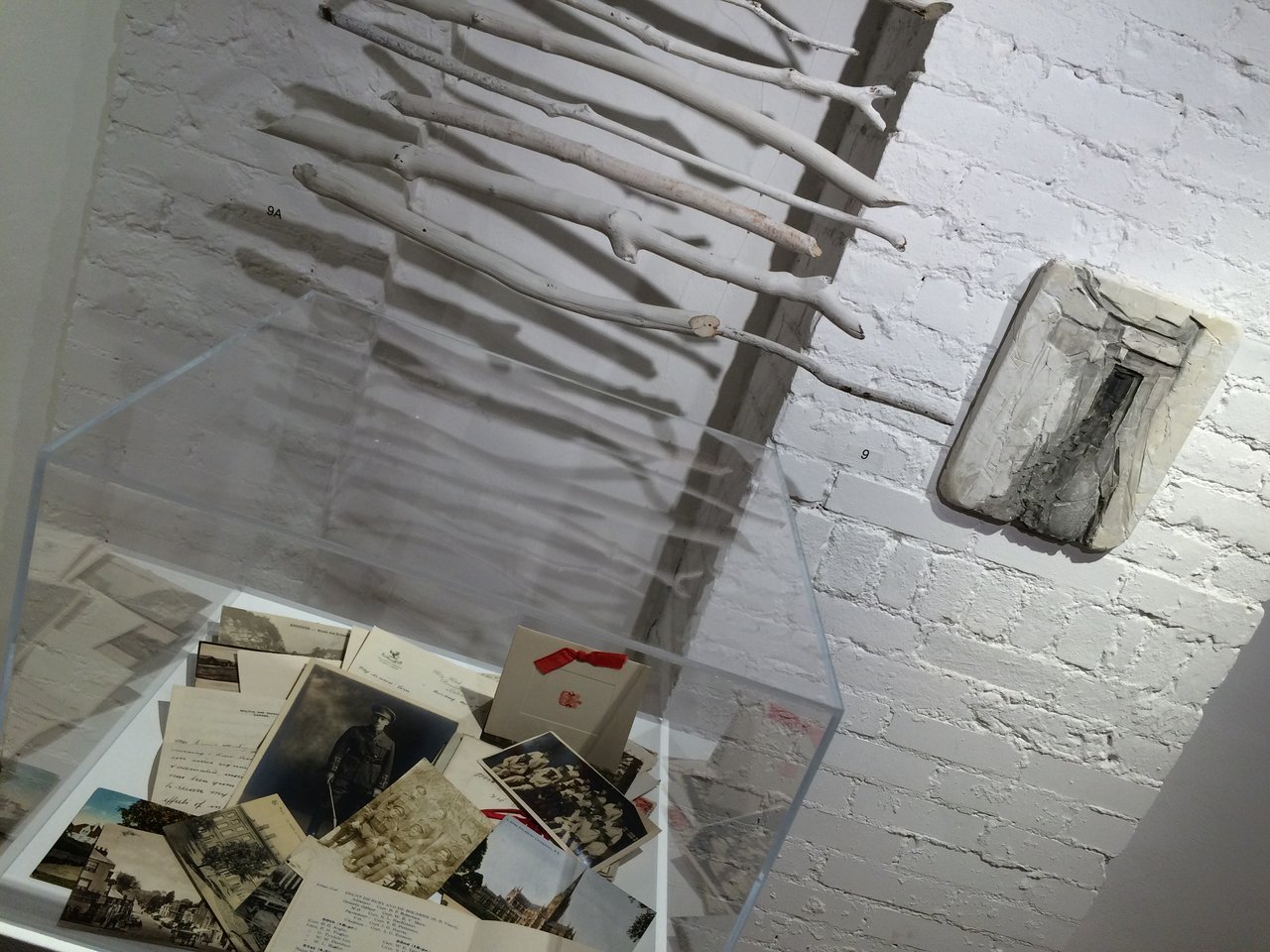 Installation view showing Julia Harris, Bleached Remains, wood brushed with Portland cement, 24″ x 30″ (left) and Julia Harris, Tunnel – Trench Warfare, Portland cement, plaster of Paris, watercolour, 14″ x 10″. Image courtesy of Walnut Contemporary
Installation view showing Julia Harris, Bleached Remains, wood brushed with Portland cement, 24″ x 30″ (left) and Julia Harris, Tunnel – Trench Warfare, Portland cement, plaster of Paris, watercolour, 14″ x 10″. Image courtesy of Walnut Contemporary
Like Harris’ work, many pieces in the show take a specifically Canadian perspective, utilizing Canadian materials or imagery. “Oh Deer”, a sculpture by artist Lumir Hladík, for instance, combines a WWII military crutch with a Canadian deer foot, drawing links between the violence of the early-twentieth century and Canadian natural resources, landscapes, peoples, and ways of life. Similarly, Miguel Barros’ “Flanders Field” connects potent Canadian symbols with the violence of war. Taking a Canadian flag as its base, the painting visually links the much-loved red poppy with a bullet wound, while Barros’ treatment of the fibre base of the flag lends this national symbol a decayed appearance. As Vilhena points out, the Canadian experience is well suited to the themes explored in RECALL. As is often discussed, the entirety of Canada’s population—except, of course, its First Peoples — comes from elsewhere, from a remembered homeland. And, indeed, many of this country’s citizens immigrated here to escape the perils of war, economic struggles, and persecution. It is this sense of migration and displacement that guest artist Carlos Delgado explores in his monumental “Travelers Under the Moon #6”. Utilizing a pared-down aesthetic new to his practice, Delgado captures both the pathos and strength of three travelers in an astounding paucity of drips and brushstrokes. One of a series of eight paintings on the theme of refugees, the work calls to mind the journey of many of Canada’s current Syrian refugees, as well as many of the refugees and asylum seekers currently en route to Canada’s shores. The work is beautiful and affecting, embracing many of the practical and universal themes of the show.
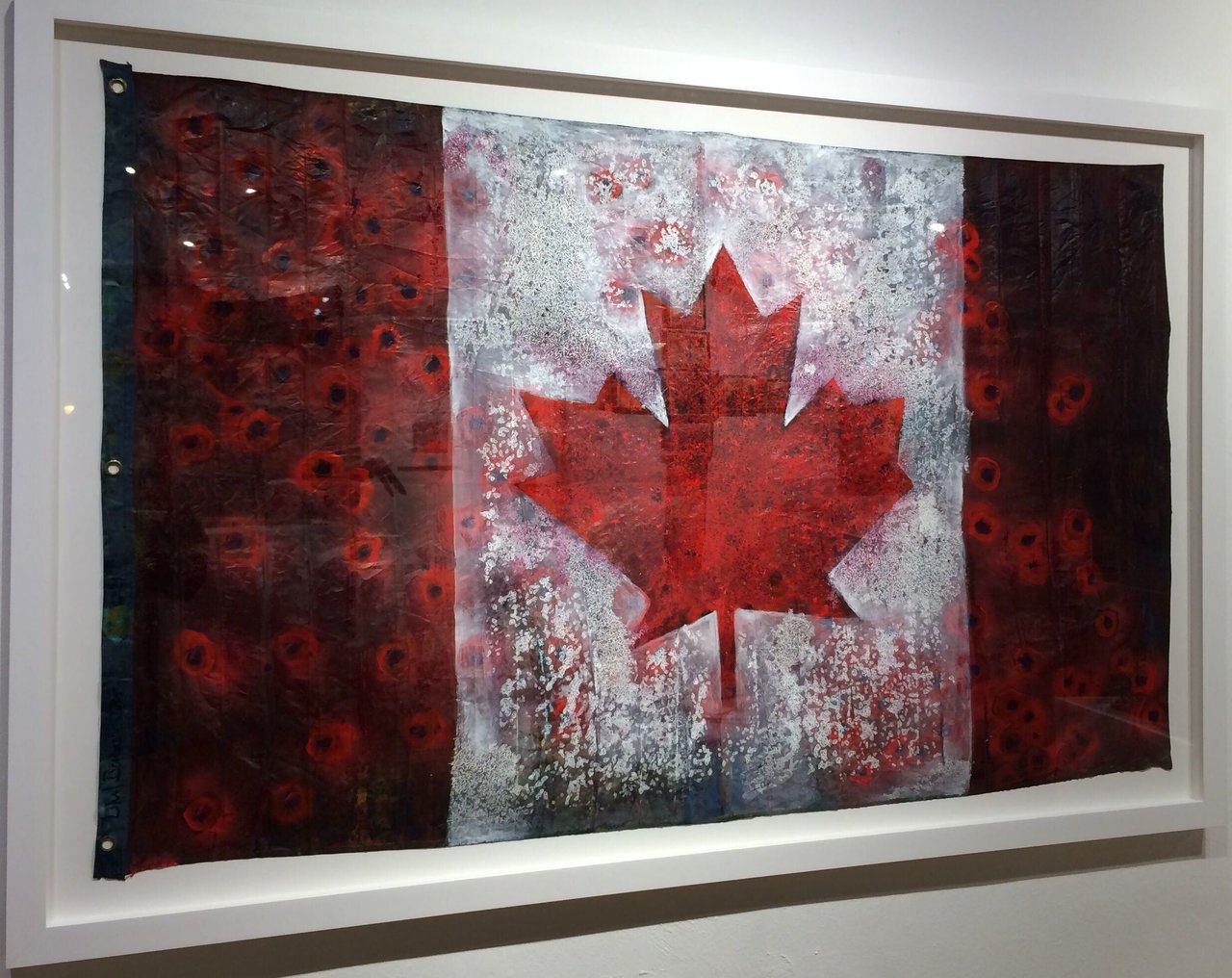 Miguel Barros, Flanders Field, acrylic and oil on recycled Canadian flag, 60″ x 35″. Image courtesy of Walnut Contemporary
Miguel Barros, Flanders Field, acrylic and oil on recycled Canadian flag, 60″ x 35″. Image courtesy of Walnut Contemporary
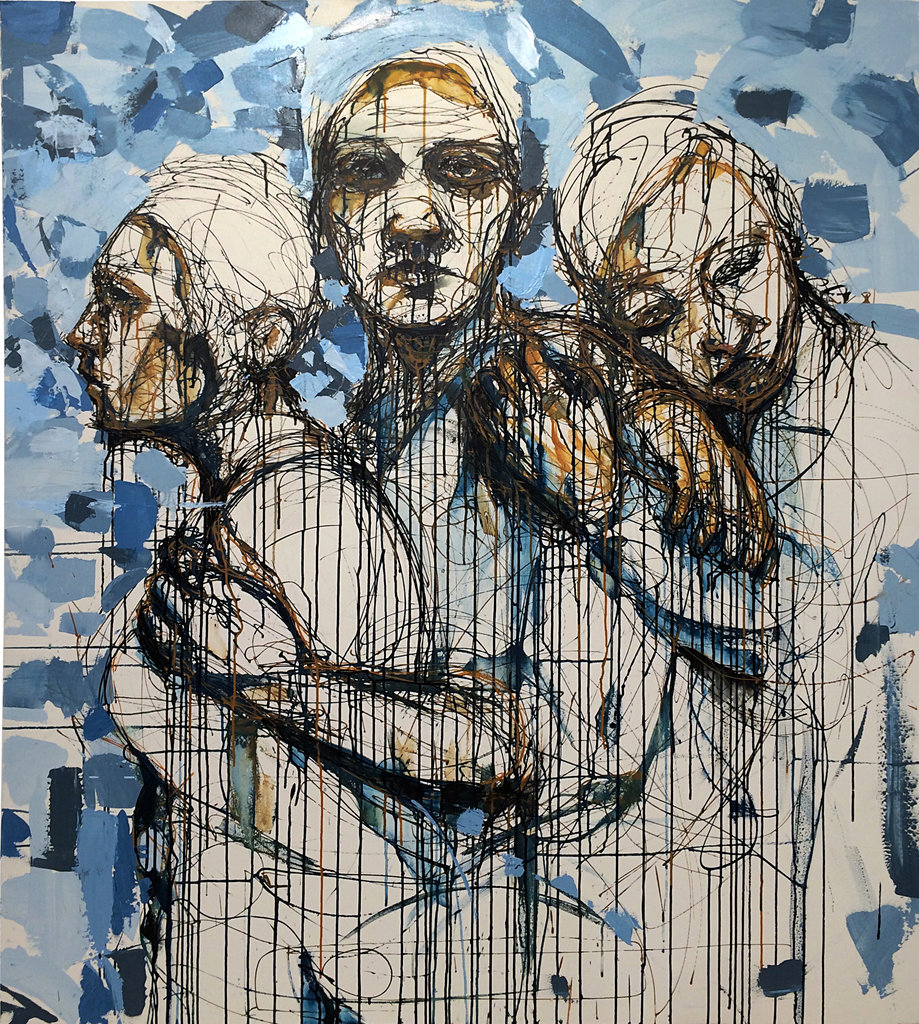 Carlos Delgado, Travelers Under the Moon #6, acrylic and oil on canvas, 60″ x 54″. Image courtesy of Walnut Contemporary
Carlos Delgado, Travelers Under the Moon #6, acrylic and oil on canvas, 60″ x 54″. Image courtesy of Walnut Contemporary
Through its exploration of these themes, RECALL successfully lives up to the overall mission of the gallery, which, as Vilhena describes, sees art as a powerful tool able to shed light on subjects such as multiculturalism, homelessness, environmentalism, and humanitarianism. In reaching this aim, RECALL provides an emotive experience not always available in Toronto’s contemporary galleries. True, a slight reduction in the number of works exhibited may have lent greater confidence to the show’s stronger pieces. However, RECALL is ultimately a timely, thought-provoking exploration, one that, amidst the current political climate, should be considered mandatory viewing for all Torontonians, even all Canadians.
Catherine MacArthur Falls
*Exhibition information: November 14 – January 23, 2016, Walnut Contemporary, 201 Niagara Street (entrance at side lane). Gallery hours: Wed – Sat, 1 – 6 p.m.
